The Translational Research Institute on Pain in Later



![Population Aging By Rcragun (Own work) [CC BY 3. 0 (http: //creativecommons. org/licenses/by/3. 0)], Population Aging By Rcragun (Own work) [CC BY 3. 0 (http: //creativecommons. org/licenses/by/3. 0)],](https://slidetodoc.com/presentation_image/f02c2b7b85d26bc5cbe43730b85ceebc/image-4.jpg)






















































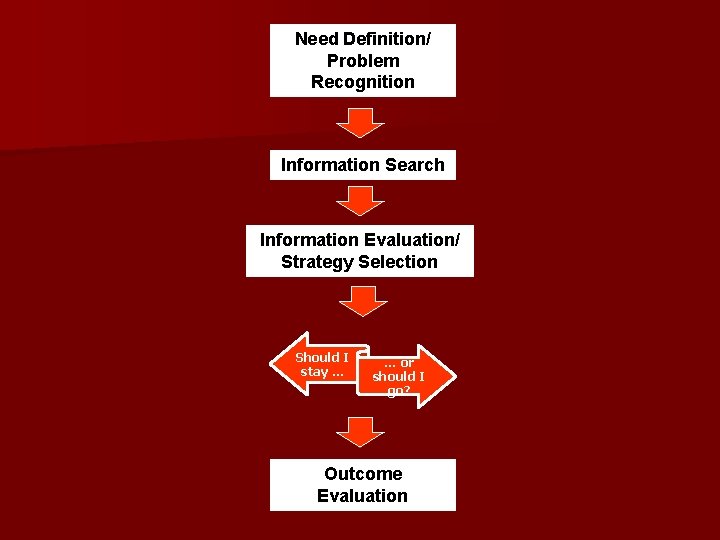

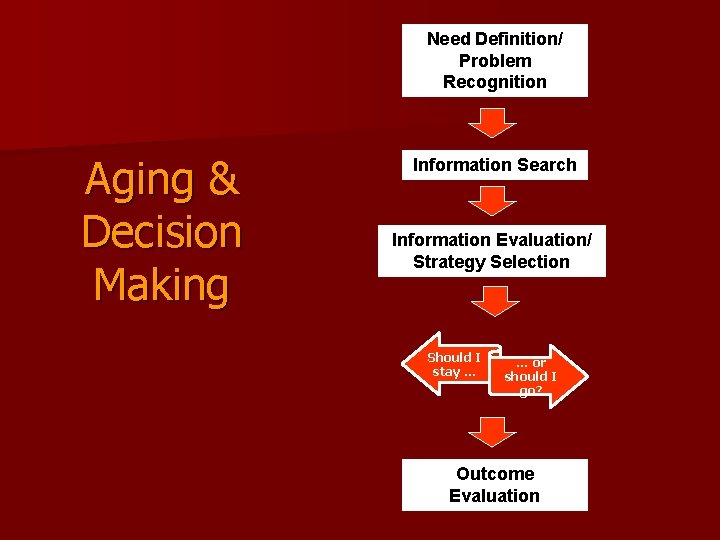

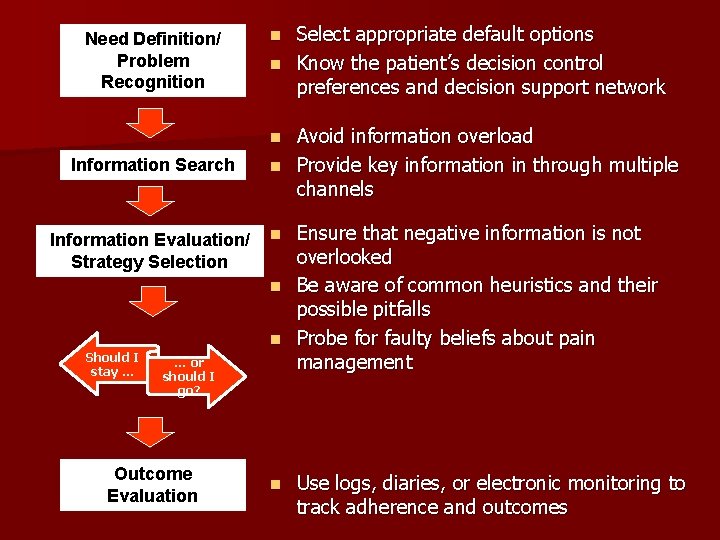
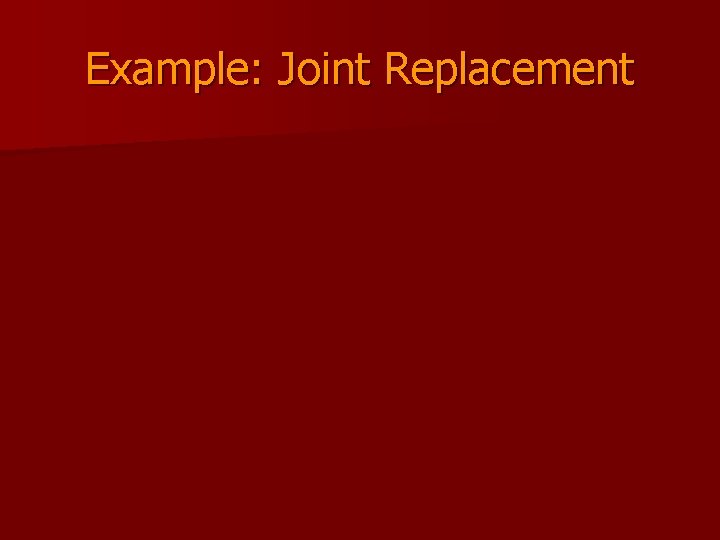
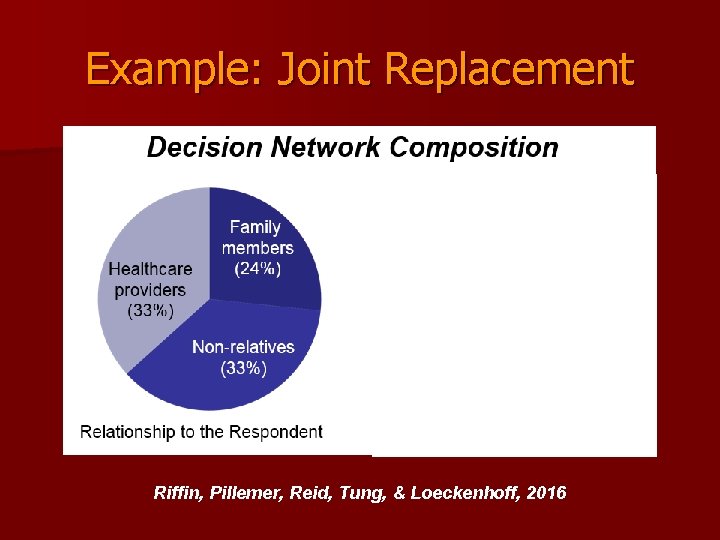
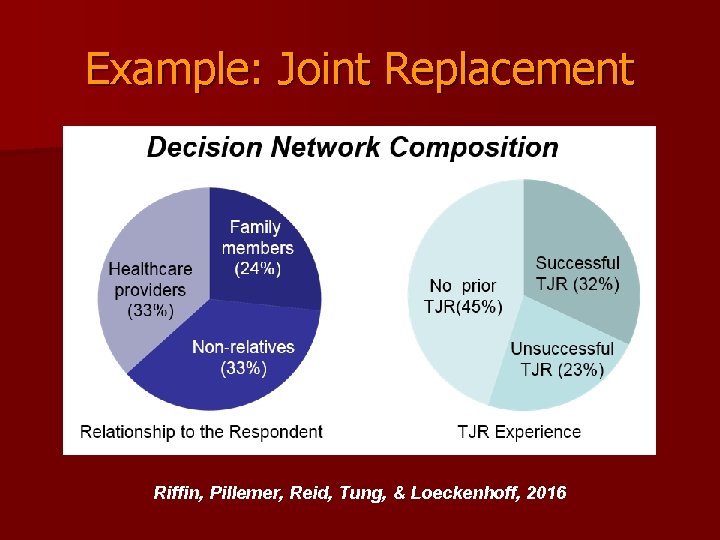
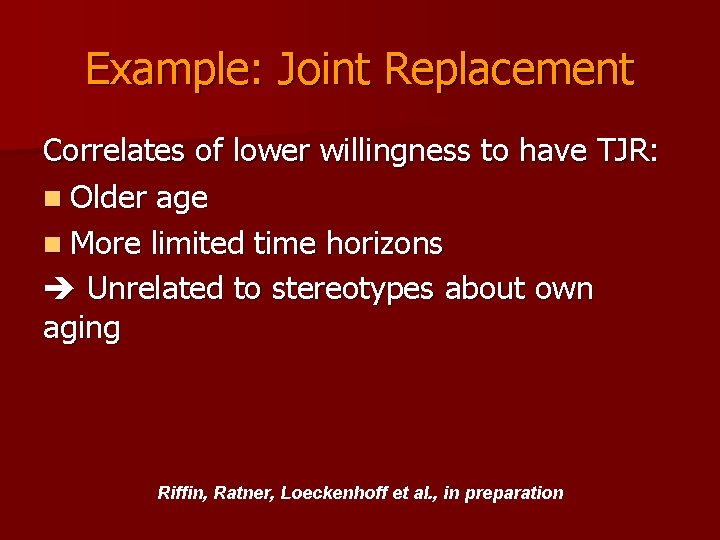
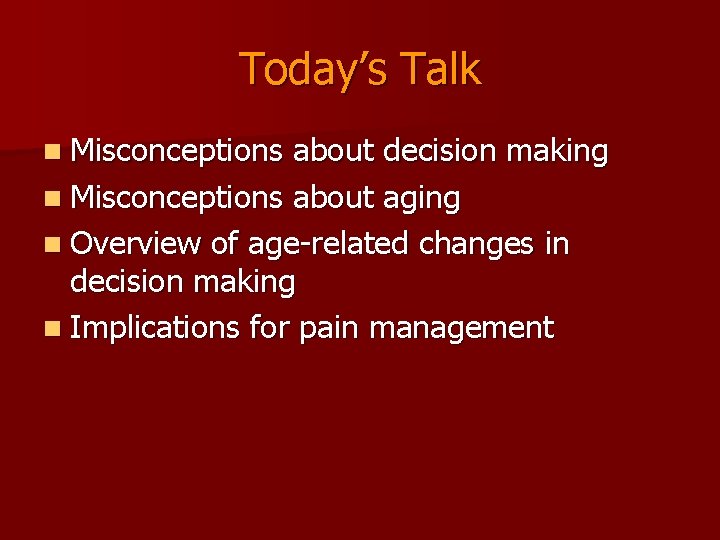

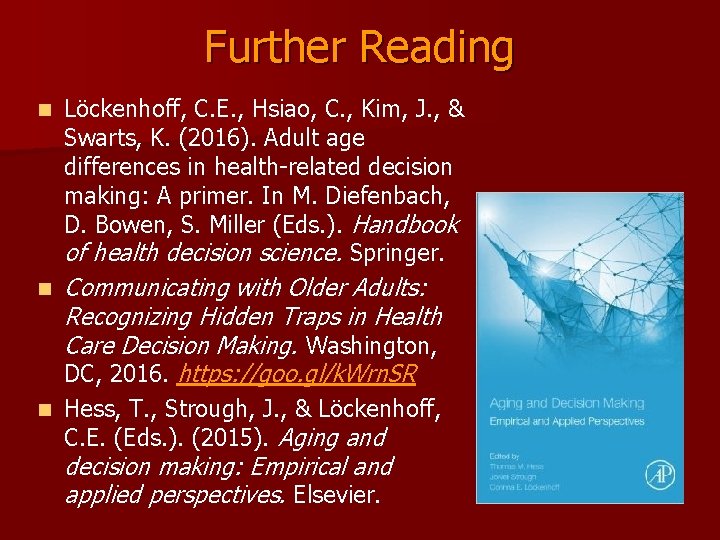
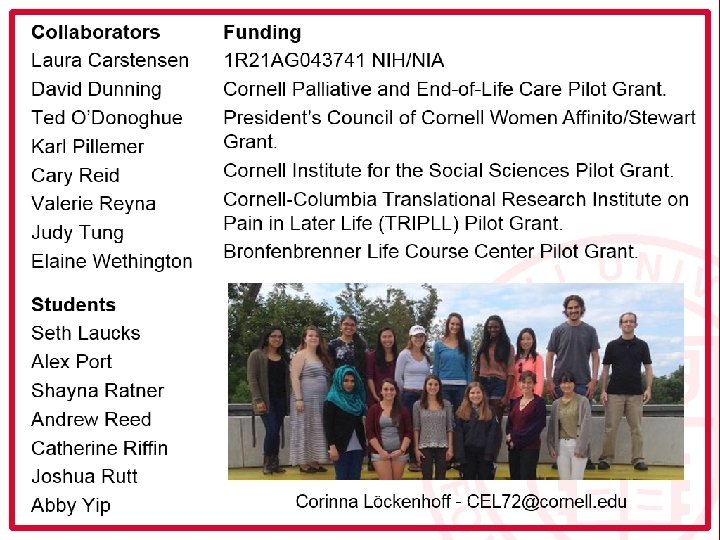

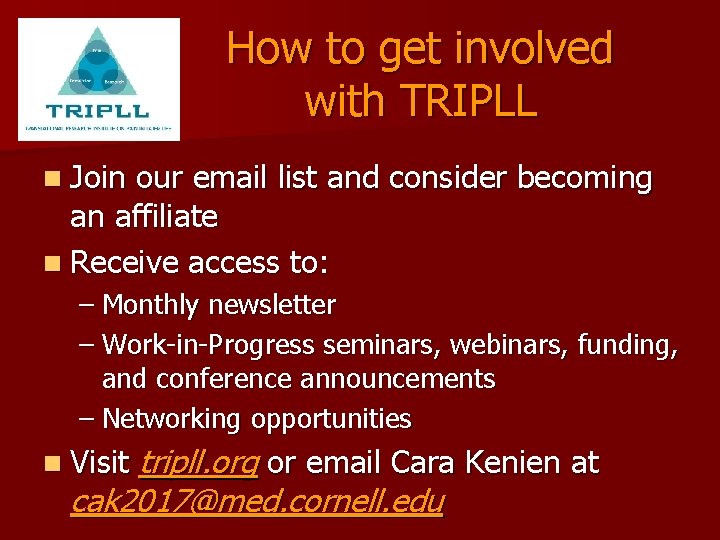
- Slides: 73

The Translational Research Institute on Pain in Later Life (TRIPLL) at Cornell University n NIA funded Edward R. Roybal Center established in response to the plight of millions of older adults experiencing persistent pain. n Mission: To improve the prevention and management of pain in later life; thereby increasing the health and well-being of older adults. n Supports translational research on aging and pain in the greater NYC area.

How to get involved with TRIPLL n Join our email list and consider becoming an affiliate n Receive access to: – Monthly newsletter – Work-in-Progress seminars, webinars, funding, and conference announcements – Networking opportunities n Visit tripll. org or email Cara Kenien at cak 2017@med. cornell. edu

Aging, Decision Making, and Pain Management: Webinar Series Introduction Corinna E. Löckenhoff Cornell University Weill Cornell Medical College
![Population Aging By Rcragun Own work CC BY 3 0 http creativecommons orglicensesby3 0 Population Aging By Rcragun (Own work) [CC BY 3. 0 (http: //creativecommons. org/licenses/by/3. 0)],](https://slidetodoc.com/presentation_image/f02c2b7b85d26bc5cbe43730b85ceebc/image-4.jpg)
Population Aging By Rcragun (Own work) [CC BY 3. 0 (http: //creativecommons. org/licenses/by/3. 0)], via Wikimedia Commons

Population % Over Age 65 By Rcragun (Own work) [CC BY 3. 0 (http: //creativecommons. org/licenses/by/3. 0)], via Wikimedia Commons


The Ideal of Informed Choice

Online Health Information


Today’s Talk n Misconceptions about decision making n Misconceptions about aging n Overview of age-related changes in decision making n Implications for pain management

Today’s Talk n Misconceptions about decision making n Misconceptions about aging n Overview of age-related changes in decision making n Implications for pain management

Decision Making in Isolation Should I stay … … or should I go?

Decision Making in Context Life Goals Societal Norms Context Should I stay … Education … or should I go? Prior Knowledge Social Partners Co-Morbitities Financial Constraints

Decision Making as a Single Point in Time Should I stay … … or should I go?

Need Definition/ Problem Recognition Decision Making as a Process Information Search Information Evaluation/ Strategy Selection Should I stay … … or should I go? Outcome Evaluation

Need Definition/ Problem Recognition Decision Making as a Process Information Search Information Evaluation/ Strategy Selection Should I stay … … or should I go? Outcome Evaluation

Decision Making as Cognition Should I stay … … or should I go? X 3 X 1 X 4 X 2 X 5

The Role of Emotion n Incidental affect Current mood states (irrelevant to the decision) n Integral affect Emotional responses to decision options n Trade-off aversion Emotional responses to decision process

Decision Making … happens in context … constitutes a process … involves both cognition and emotion

Today’s Talk n Misconceptions about decision making n Misconceptions about aging n Overview of age-related changes in decision making n Implications for pain management

How we tend to think aging looks like …

How aging actually looks like … Gerstorf & Ram, 2013

Healthy Aging vs. Terminal Decline Gerstorf & Ram, 2013

Emphasis on Cognitive Aging

Aging is Multidimensional

Aging is Multidimensional n Cognition n Goals and emotions n Time horizons n Cohort effects n Aging stereotypes

Aging is Multidimensional n Cognition n Goals and emotions n Time horizons n Cohort effects n Aging stereotypes

Cognitive Mechanics vs. Cognitive Pragmatics

Aging and Cognition n Reliance on existing world knowledge n Reliance on rule-based strategies (heuristics) n Selective allocation of processing resources to most important aspects

Aging is Multidimensional n Cognition n Goals and emotions n Time horizons n Cohort effects n Aging stereotypes

Well-being Across the Life Span A Paradox of Aging? Sutin, Terracciano et al. 2013

Primary vs. Secondary Control Primary Control = Change Environment Secondary Control = Change Internal Responses Heckhausen & Schulz, 1995

Goal Priorities Freund, Riediger, & Baltes, 2006

Aging is Multidimensional n Cognition n Goals and emotions n Time horizons n Cohort effects n Aging stereotypes

Socioemotional Selectivity Theory (Carstensen, Issacowitz, & Charles, 1999; Carstensen, 2006) Life-span Development n Open-ended time n Limited time n Optimize future n Optimize present n Information-seeking n Emotion-regulation

The Age-Related Positivity Effect Charles, Mather & Carstensen, 2003

Aging is Multidimensional n Cognition n Goals and emotions n Time horizons n Cohort effects n Aging stereotypes

Cohort Effects in Preferences for Healthcare Choices Lagana & Shanks, 2002; Sharma et al. , 2011

Aging is Multidimensional n Cognition n Goals and emotions n Time horizons n Cohort effects n Aging stereotypes

Aging Stereotypes Among patients: n May inhibit cognitive performance (stereotype threat) n May lower outcome expectations for treatments Among providers: n May prevent effective communication n May limit treatment suggestions

Aging is Multidimensional n Cognition n Goals and emotions n Time horizons n Cohort effects n Aging stereotypes

Today’s Talk n Misconceptions about decision making n Misconceptions about aging n Overview of age-related changes in decision making n Implications for pain management

Need Definition/ Problem Recognition Decision Making as a Process Information Search Information Evaluation/ Strategy Selection Should I stay … … or should I go? Outcome Evaluation

Need Definition/ Problem Recognition

Need Definition/ Problem Recognition Compared to younger adults, older adults are more likely to: n Avoid choices n Postpone choices n Delegate choices (e. g. , Chen et al. , 2011; Pinquart & Duberstein, 2004)

Need Definition/ Problem Recognition

Need Definition/ Problem Recognition Information Search

Information Search Declines with Age (e. g. , Löckenhoff & Carstensen, 2007; Mata & Nunes, 2011)

Types of Information n Younger adults are more likely to perform an exhaustive review of the available information n Older adults are more likely to rely on: – Existing cognitive frameworks – General background knowledge – Prior experiences (Gilinsky & Judd, 1994; Gould, 1999; Berg et al. 1999)

Preferences for Choice Decline with Age

Preferences for Choice Decline with Age

Preferences for Choice decline with Age How many options would you like to choose from? (Reed, Mikels, & Löckenhoff, 2013)

Need Definition/ Problem Recognition Information Search Information Evaluation/ Strategy Selection

Decision Strategies n Younger adults use – compensatory strategies (lower scores on some aspects can be compensated by higher scores on others) n Older adults use – non-compensatory strategies (focus on select aspects) – satisficing strategies (select first option that meets minimal standard) (e. g. , Johnson, 1990)

Information Search becomes less Compensatory & more Satisficing with Age

The Age-Related Positivity Effect Charles, Mather & Carstensen, 2003

The Positivity Effect in Decision Making (e. g. , Löckenhoff & Carstensen, 2007; 2008)

Proportion of Positive Cells The Positivity Effect in Decision Making Löckenhoff & Carstensen, 2007 – Psychology and Aging

Need Definition/ Problem Recognition Information Search Information Evaluation/ Strategy Selection Should I stay … … or should I go? Outcome Evaluation

Decision Quality and Outcome Satisfaction n Age differences in objective decision quality depend on task type – Older adults perform worse in decisions involving new learning and effortful processing (cognitive mechanics) – Older adults perform well in decisions involving experience and affective preferences (cognitive pragmatics) n Older adults are more satisfied with their choices, less likely to report regret

Need Definition/ Problem Recognition Aging & Decision Making Information Search Information Evaluation/ Strategy Selection Should I stay … … or should I go? Outcome Evaluation

Today’s Talk n Misconceptions about decision making n Misconceptions about aging n Overview of age-related changes in decision making n Implications for pain management

Need Definition/ Problem Recognition Select appropriate default options n Know the patient’s decision control preferences and decision support network n Avoid information overload n Provide key information in through multiple channels n Information Search Information Evaluation/ Strategy Selection Should I stay … … or should I go? Outcome Evaluation Ensure that negative information is not overlooked n Be aware of common heuristics and their possible pitfalls n Probe for faulty beliefs about pain management n n Use logs, diaries, or electronic monitoring to track adherence and outcomes

Example: Joint Replacement

Example: Joint Replacement Riffin, Pillemer, Reid, Tung, & Loeckenhoff, 2016

Example: Joint Replacement Riffin, Pillemer, Reid, Tung, & Loeckenhoff, 2016

Example: Joint Replacement Correlates of lower willingness to have TJR: n Older age n More limited time horizons Unrelated to stereotypes about own aging Riffin, Ratner, Loeckenhoff et al. , in preparation

Today’s Talk n Misconceptions about decision making n Misconceptions about aging n Overview of age-related changes in decision making n Implications for pain management

Feb. 27, 2017 | 1 pm-2 pm EST: Presenter: Gregory Samanez-Larkin, Ph. D, Yale University Applying Research on Financial Decision Making in Aging to Social & Health Domains March 27, 2017 | 1 pm-2 pm EST: Presenter: Liana Fraenkel, MD, MPH, Yale University Innovative Ways to Incorporate Patient Preferences into Medical Decision-Making April 24, 2017 | 1 pm-2 pm EST Presenter: Jon Lurie, MD, Dartmouth University Patient Expectations & Decision Support Strategies in Pain Care May 22, 2017 | 1 pm-2 pm EST Presenter: Adam Hirsh, Ph. D, Indiana University-Purdue University Indianapolis Racial & Ethnic Pain-Related Disparities: Provider & Contextual Factors & Potential Solutions June 26, 2017 | 1 pm-2 p, EST Presenter: Joseph Kable, Ph. D, University of Pennsylvania The Impact of Expectations & Persistence on Achieving Long Term Goals

Further Reading n Löckenhoff, C. E. , Hsiao, C. , Kim, J. , & Swarts, K. (2016). Adult age differences in health-related decision making: A primer. In M. Diefenbach, D. Bowen, S. Miller (Eds. ). Handbook of health decision science. Springer. n Communicating with Older Adults: Recognizing Hidden Traps in Health Care Decision Making. Washington, DC, 2016. https: //goo. gl/k. Wrn. SR n Hess, T. , Strough, J. , & Löckenhoff, C. E. (Eds. ). (2015). Aging and decision making: Empirical and applied perspectives. Elsevier.



How to get involved with TRIPLL n Join our email list and consider becoming an affiliate n Receive access to: – Monthly newsletter – Work-in-Progress seminars, webinars, funding, and conference announcements – Networking opportunities n Visit tripll. org or email Cara Kenien at cak 2017@med. cornell. edu